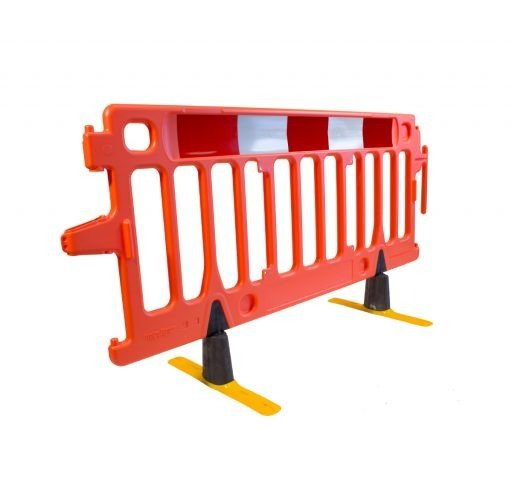Traffic management, protection, and welfare are top priorities when a company works on an initiative that must be finished close to a road. Companies should take steps to ensure the protection of their workers, pedestrians, and motorcyclists who are travelling on the road. It relates to companies needing their on-site tools to be adaptable and efficient in halting or limiting the damage caused by accidents. Below are the different types of barriers. Each traffic barrier serves a different purpose.
Traffic Barrier Types and Applications
-
A-shaped Barrier
A-frame barriers are a type of barrier that is often used in areas having low traffic. Typically, it is made of reflectors with horizontal boards attached to the edges. Supports with legs in an “A” shape keep this barrier stable. A-frame barriers are not appropriate for areas with heavy traffic because of their lightweight layout. It is typically used to have control over crowds and school zones. For brief construction projects, this can be used. Barriers with orange and white lines might draw a pedestrian’s attention and warn them of potentially harmful situations. It is a useful traffic barrier.
-
Delineator Tubes
Delineator tubes get a compact configuration compared to other barrier kinds, which have wide footprints. Instead of acting as barriers, such equipment is used to warn approaching pedestrians and cars of the risks. Delineator tubes are placed on roadways with poor visibility because of the neon colours to help and assist drivers. Additionally, these barriers can be placed at the edge of a road to alert vehicles of the remaining distance. Delineator tubes are set up if the need to control traffic flow arises. In combination with some barriers, road signage in Australia can be used.
-
Concrete Barriers
Concretes can play their role in the safety of the road or as a barrier. Despite being incredibly durable and sturdy, such barriers have several potential drawbacks. The tool used to measure the retroreflection of traffic signals is called a retro reflectometer. Because concretes are quite heavy in any form, moving and transporting them might be challenging or even impossible in some situations. Additionally, installing such barriers takes a lot of time and labour. Because most of them are grey, they cannot provide enough car visibility. Road signage in Australia is very common with them.
-
Jersey Barriers
Several sites require additional barriers from those intended to direct traffic and prevent auto accidents from protecting pedestrians. The greatest example of a barrier that is appropriate for use in zones having low traffic and for preventing people from passing through a constrained area is the one referred to as Jersey Barriers. They are incredibly easy to shift, set up, break apart, and join together to form a continuous wall, just like the LCD version.
Summary
Every traffic barrier has its application. Traffic barriers, also known as crash barriers or guard rails, keep vehicles on the road and stop them from hitting dangerous objects like stones, walls, sites, or enormous storm drains. Additionally, there are barriers along the road to stop wayward cars from driving up hills or into deep water. It also plays its part in road safety. Anyone looking for road safety barriers can choose any one of them.
